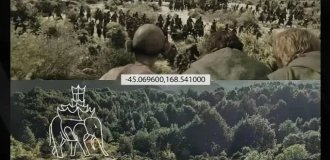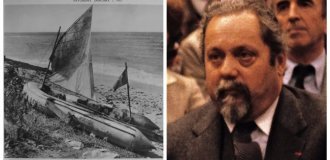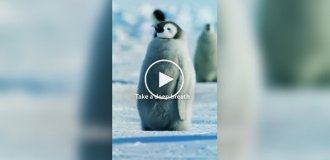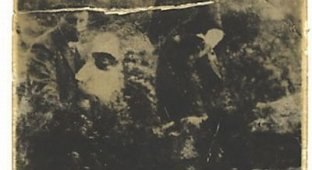Photo by A.S. Pushkin during his lifetime (7 photos)
A photograph and information appeared on the Internet that this is the only portrait of Alexander Sergeevich taken during his lifetime. He was photographed almost by Louis Daguerre himself. The process of obtaining this photograph is described below.

The plate was treated with iodine vapor, as a result of which it was covered with a network-sensitive layer of silver iodide. So what is it? Sensation? Let's figure it out...
We read, although not the ultimate truth, but still Wikipedia:
The daguerreotype was created by the French inventor Niépce ca. 1822 and made public by the artist Daguerre in 1839. Considered the first practical method of photography, it was the only way to obtain photographic images until the invention of the wet collodion process in 1851, which completely replaced the more complex and dangerous daguerreotype.
Or a little more detail:
Only at the beginning of the 19th century did the Frenchman Joseph Niepce seriously set out to obtain a photographic image. Having spent a lot of money, in 1822 he achieved his goal - he received the first relatively clear image, which the author called “The Laid Table”.
However, this photo has not survived, and therefore the first photo in the world is considered to be the “View from the Window” photograph taken by Niepce in 1826.

It should be noted here that to obtain this extremely blurry and unclear photograph, the inventor maintained an exposure for eight hours in bright light. It is clear that it was absolutely impossible to film people in this way.
Niépce spent a lot of money on his invention, went bankrupt, and died in 1833 without achieving any significant results.
Louis-Jacques-Mandet Daguerre (1787-1851) did not invent photography, but he made it work, made it popular. During 1839, when he made his report, his name and his process became known in all parts of the world. Fame, wealth and confidence came to him. The name of Joseph Nicéphore Niepce was practically forgotten. However, Daguerre was the person who did everything to bring Niepce’s invention to life, but using chemical elements that were unknown to Niepce. Daguerre's idea was to take photographs using mercury vapor. At first he conducted experiments with mercury bichloride, but the images were very weak. He then improved the process using sugar or chlorine oxide, and finally, in 1837, after eleven years of experimentation, he began to heat mercury, the vapor of which developed the image. He captured the image perfectly, using a strong solution of common salt and hot water to wash away the silver iodide particles that had not been exposed to light. But it took Daguerre another two years to finalize his invention, and only in 1839 did he present it to the French Academy of Sciences.
The first official report on the daguerreotype process took place at a meeting of the French Academy of Arts and Sciences on August 19, 1839. The details of the process were revealed by an influential member of the academy, astronomer François Arago, whom Daguerre infected with his enthusiasm. Daguerre himself was unable to make a report because he was completely hoarse due to a cold. The practical demonstration of the process took place only on September 17, 1839. It was a success. Daguerre's principle of developing with mercury vapor was original and reliable, and was based, no doubt, on the knowledge Daguerre received from Niepce. Unfortunately, Niépce did nothing to develop his invention further after 1829, nor did his son Isidore, who became Daguerre's partner after his father's death. The son, in great need of funds, a few years later entered into a new contract, which indicated that Daguerre was the inventor of the daguerreotype.

Daguerre's principle of developing with mercury vapor was original and reliable, and was based, no doubt, on the knowledge received by Daguerre from Niepce. Unfortunately, Niépce did nothing to develop his invention further after 1829, nor did his son Isidore, who became Daguerre's partner after his father's death. The son, in great need of funds, a few years later entered into a new contract, which indicated that Daguerre was the inventor of the daguerreotype.
Louis-Jacques-Mande Daguerre. Paris Boulevard. 1839 Daguerreotype. This first photograph of a man was sent by Daguerre to the King of Bavaria. The original, which was in the State Museum in Munich, was destroyed during the Second World War.
And now we read when Pushkin died:
(January 27) On February 8, 1837, Pushkin shot himself in a duel with Dantes, was mortally wounded and died (January 29) on February 10 in his house on the Moika.
At that time, Louis Daguerre continued to conjure chemicals in his laboratory, trying to achieve the desired result, and could not photograph the poet. It is very unlikely that even if in 1937 something had begun to work out for Daguerre, he would have rushed headlong to Russia where he would have managed to photograph Pushkin by January 27.
Yes and most importantly
- there is not a single sane source that would at least approximately explain where this “sensational” photograph of Pushkin came from.
Well, who wants to see what Pushkin really looked like - please:

Steel engraving by the English artist Thomas Wright, who lived in Russia for a long time. Dates from 1837. It is unknown whether the drawing was made from life, but Pushkin and Wright knew each other. This is the best-selling image of the poet during his lifetime - the price was 5 rubles in banknotes on Chinese paper and 1 ruble in silver on vellum.
Or even more precisely:

This is his death mask.
And the fact that the supposed photograph is more like...

or, as a last resort...

What do you think about this?
And most importantly, remember, you can’t trust anyone, especially on the Internet! :-)






















